Each students began with a slab of clay. They cut it into an interesting organic shape and cut out a hole in the middle. The hole should be about as large as your fist. Around the outside of the hole, there must be an ODD amount of small holes poked through to create the loom. Texture was then added.
To glaze the clay, each student selected two colors and had to blend the two colors in an interesting way. Some did a gradation from top to bottom, others did a circle of color around the big hole and blended the other color to the outside.
Once clay had been glazed and fired, we had to create the loom for the students to weave on. We found that there is a sort of equation of how to do this in order to work. This took a lot of trial and error.
Next students selected yarn and tied that to the center of the strings and simply wove the yarn in and out and in and out of the strings to create a colorful radial pattern. Some students used only one color, others used many. I left that decision up to them.
When the projects were finished, I added wire to the pieces so that students can hang them on their walls. They turned out absolutely beautiful. The project took a total of five 45 minute class periods.
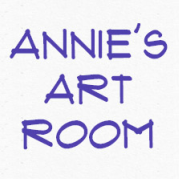
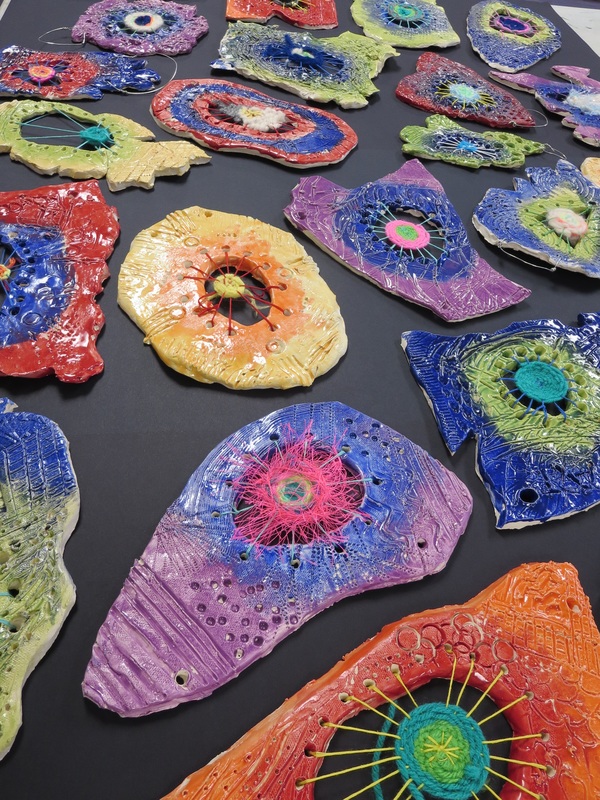
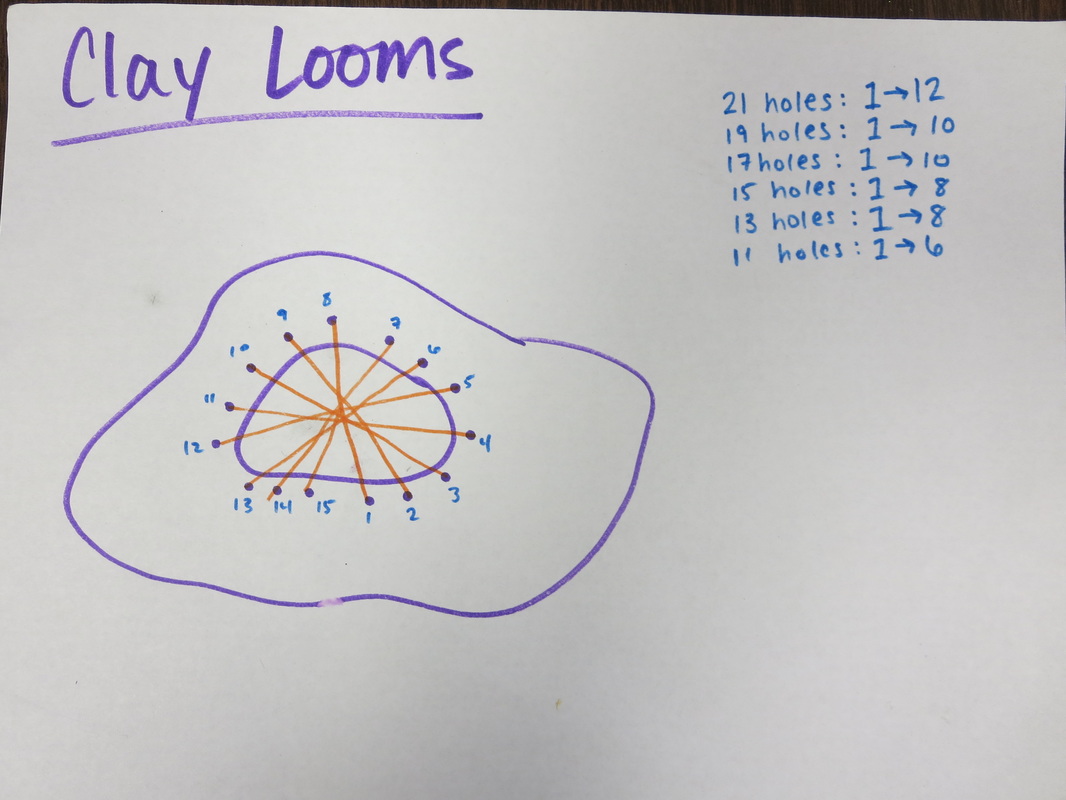
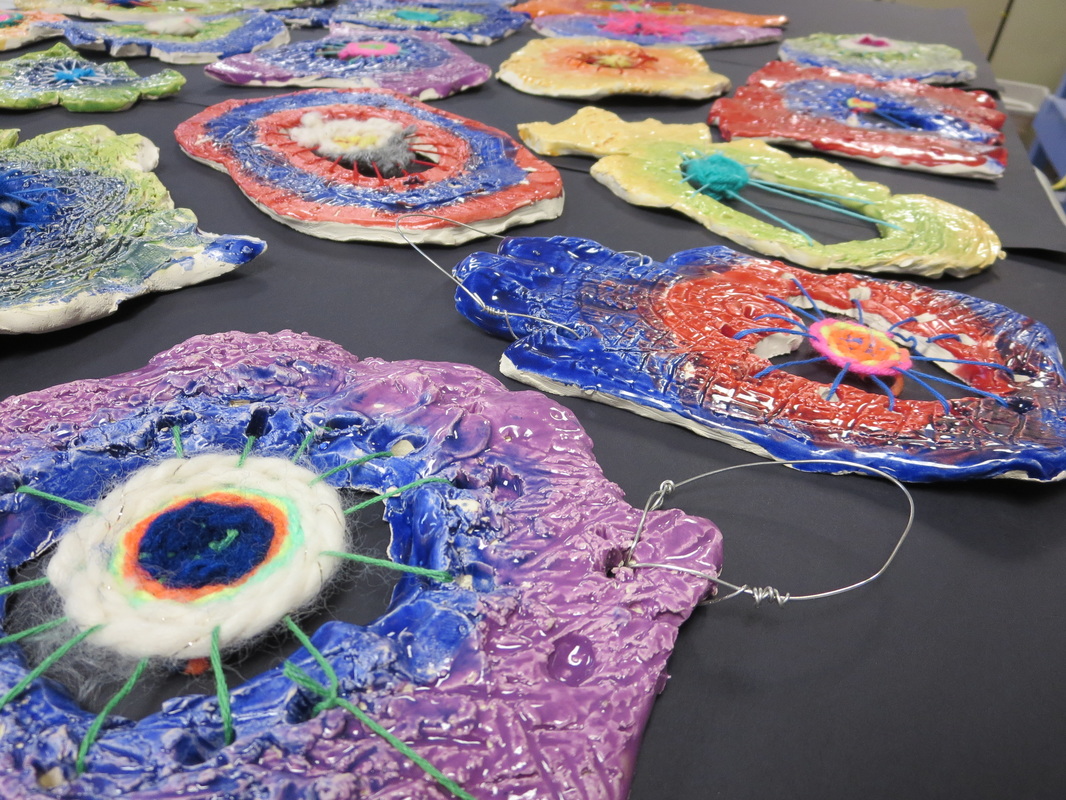
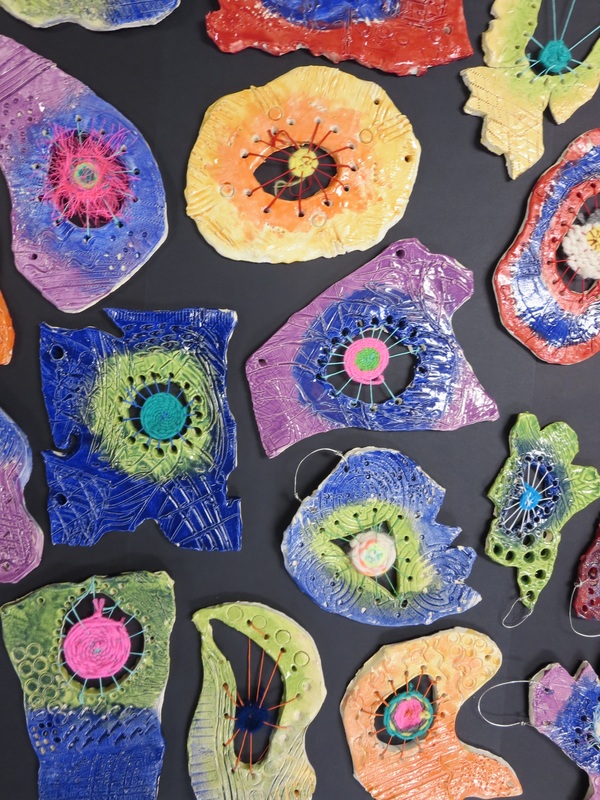
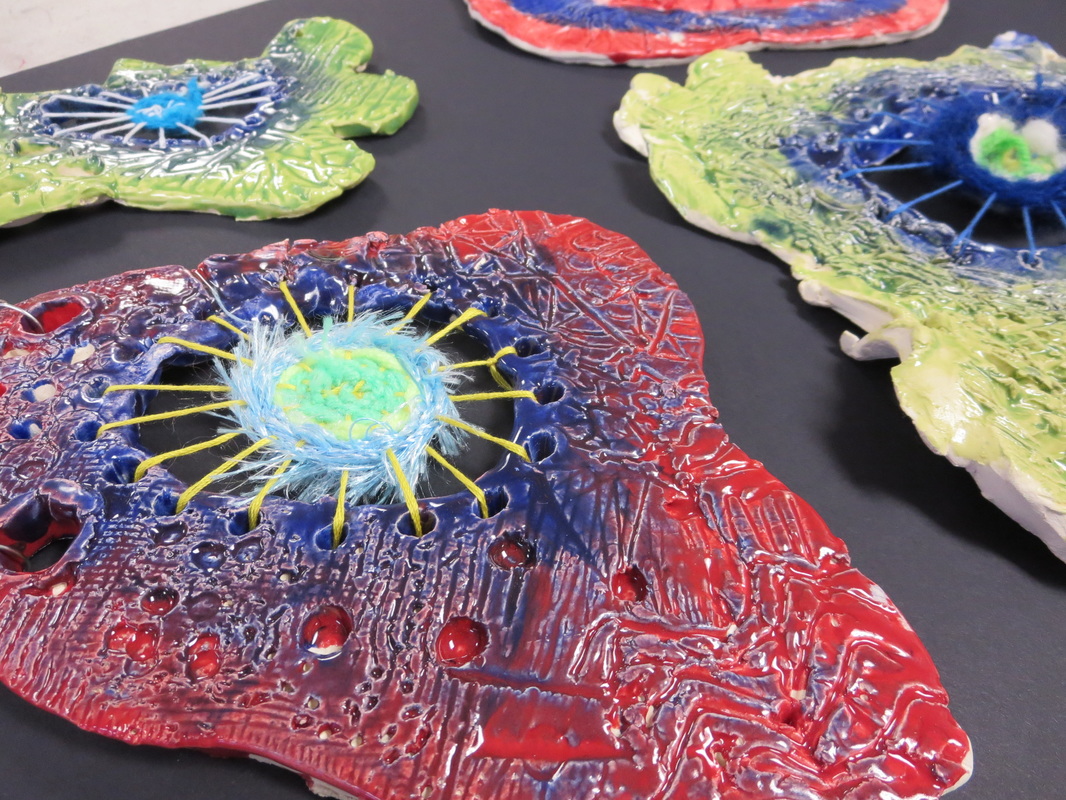
 RSS Feed
RSS Feed
